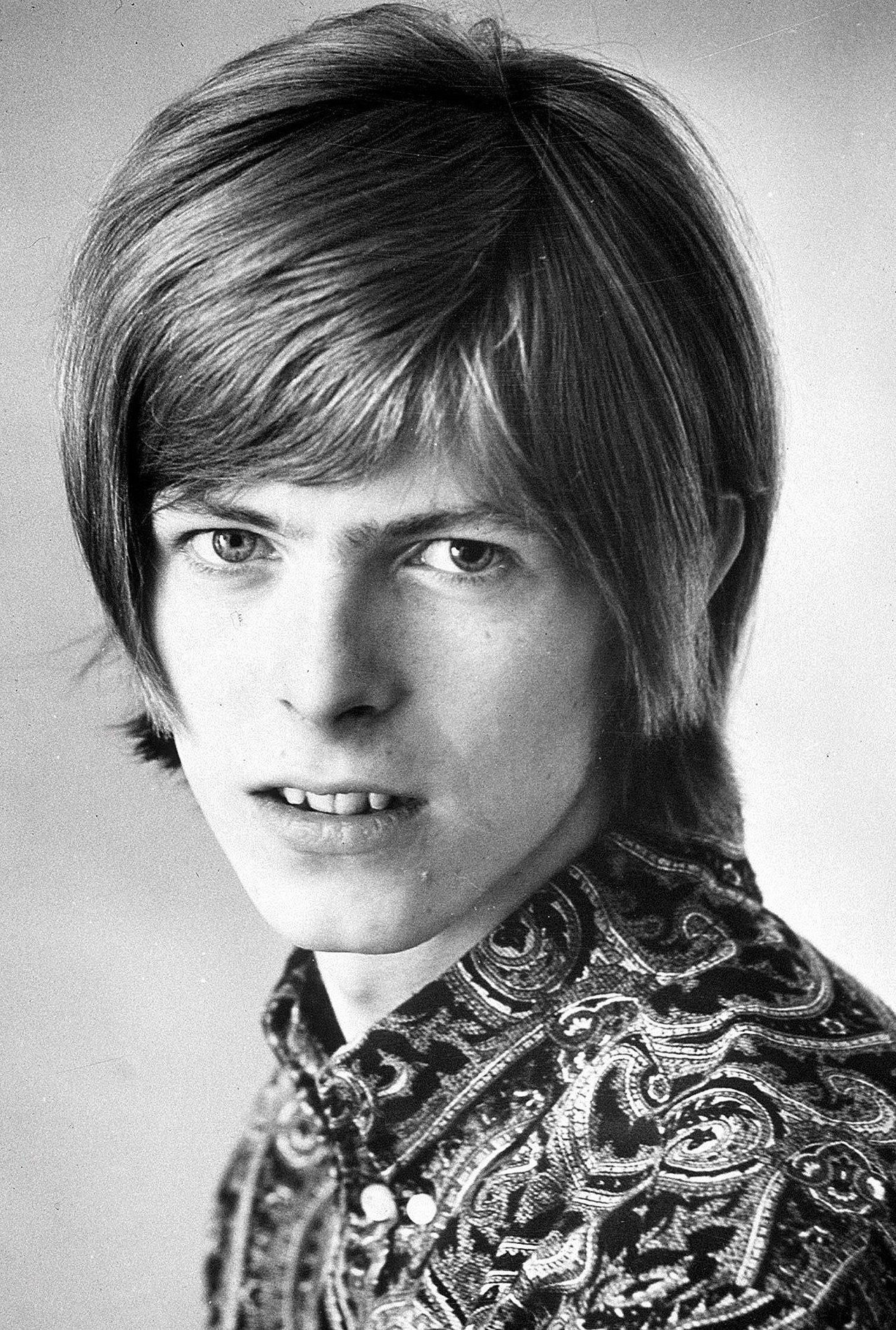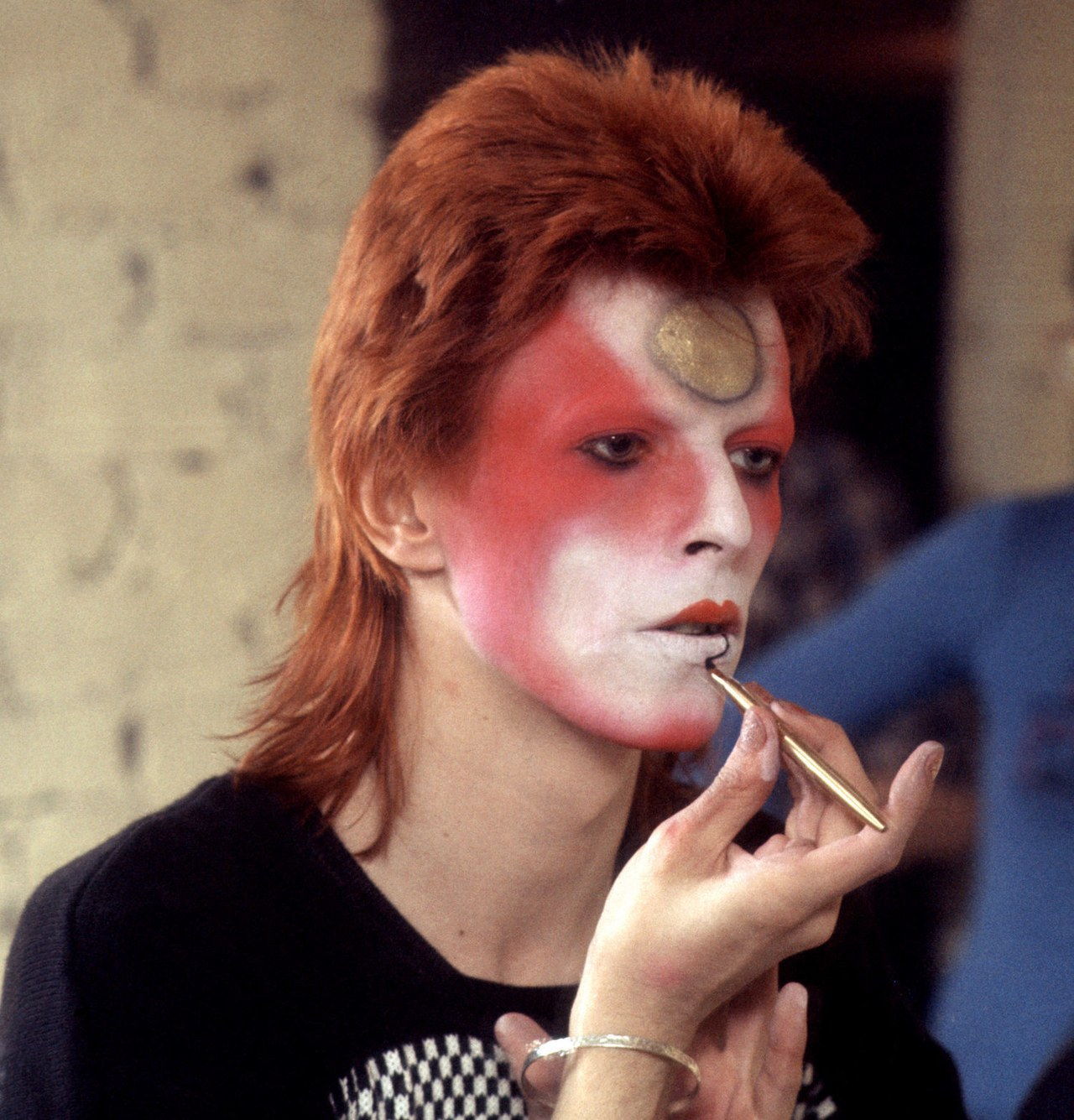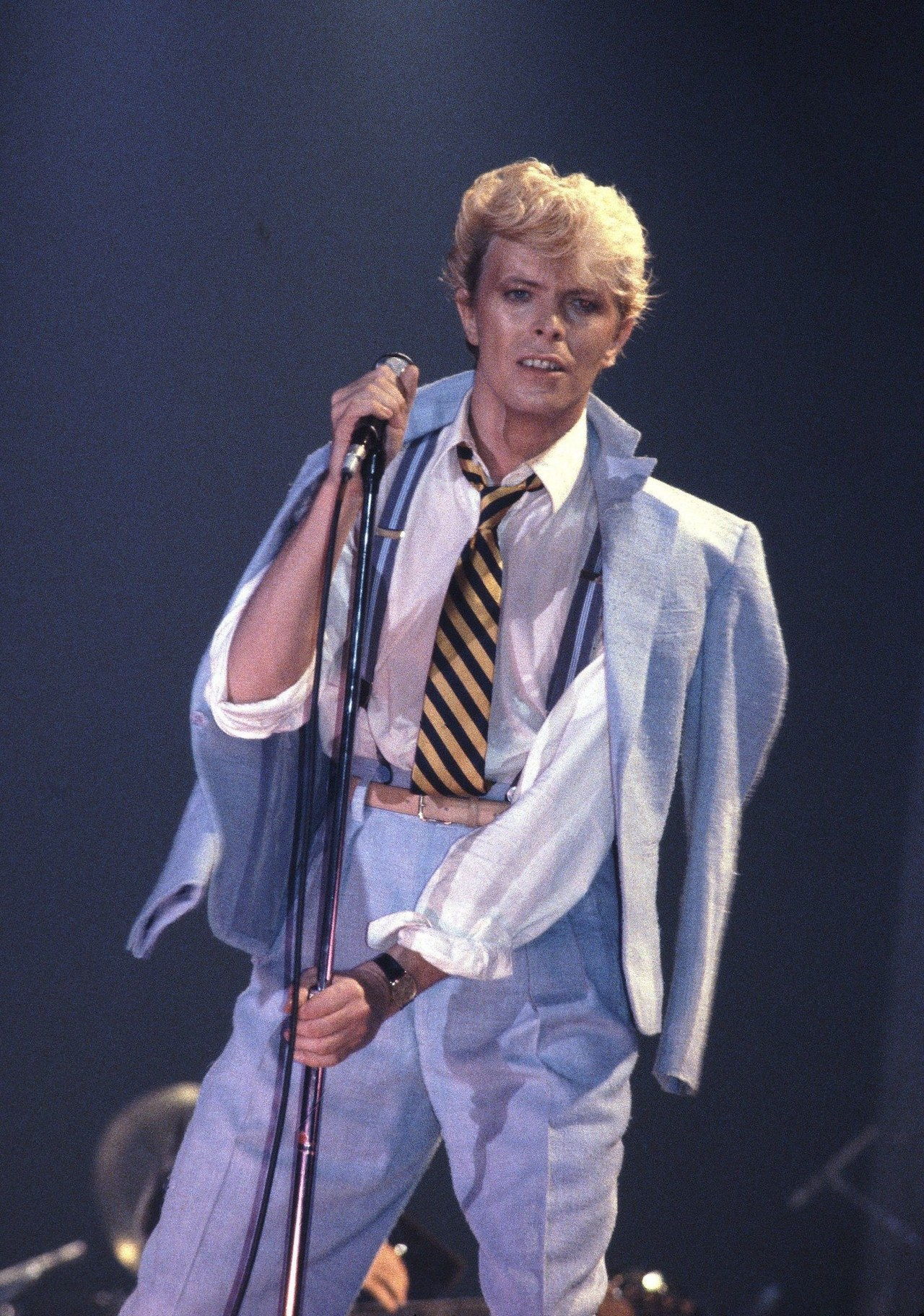How David Bowie Changed the Way We Look at Beauty
David Bowie was still 17-year-old David Jones from Brixton, England, when he first appeared on the BBC’s Tonight show in 1964. He was invited on to discuss the Society for the Prevention of Cruelty to Long-Haired Men, an organization, cheeky in purpose and spirit, that he had formed after a music producer gave him flak for his shaggy haircut. “I think we all like long hair and we don’t see why other people should persecute us because of it,” Bowie proclaimed to host Cliff Michelmore in the grainy black-and-white program. Looking back at it now, that earnest proclamation challenging the then-public’s sense of normalcy feels like the first hint of the square-peg vibe the world would experience in the years to follow.

Bowie in the 1960s, when he was just emerging onto the music scene.
I can’t remember whether it was during a frantic preteen album rifling session at Boston’s Newbury Comics or at a sleepover viewing of Labyrinth that I first caught a glimpse of David Bowie. What I do remember is feeling immediately awe-struck by this amazing creature; his sound, his appearance, it was unlike anything my young self had ever experienced. Generations of teenagers have felt similarly swept up by Bowie; how could they not? We found in him a kindred misfit idol. Here was someone who told us that weird was not only OK, it was beautiful. That we should follow our imaginations, no matter what strange corners they led us to. And that playing by the rules of age-old gender norms wasn’t necessary, and, in fact, it was pretty boring.
As tribute images collectively flooded Instagram feeds over the past 24 hours, it became clear that the impact of his outlier essence was far-reaching. And in beauty and style circles, that impact was particularly indelible (just see the social media accounts of any major model, hairstylist, or makeup artist). Bowie was, after all, the ultimate image shape-shifter. In the decade-plus span between 1970 and the early 1980s, with every album release, came a radical, new, fully-imagined look. “That period was everything,” says makeup artist Pati Dubroff (who happens to have a bit role, as Kim, in the cult-favorite Bowie film The Linguini Incident). “Seeing his Ziggy Stardust character was the first time I understood and saw that makeup could be fantastical…that it could take you to magical places.”

Bowie with his iconic Ziggy Stardust mullet
Ziggy was indeed magic. Bowie nicked the idea for the spiky flame-color mullet from a model wearing Japanese designer Kansai Yamamoto on the cover of an issue of Honey magazine; decades later hairstylist Paul Hanlon would use an identically-fashioned wig to transform Kate Moss into Ziggy for the cover of a 2011 edition of Vogue Paris. Bowie completed the Ziggy look with heavy-handed Kabuki-style makeup (his makeup artist at the time, Pierre La Roche, played a critical role) and a prominent circle of glitter plastered onto his forehead—a futuristic third-eye modeled after shiny silver half-circles his Chinese professor-friend Calvin Lee would wear on his own forehead in the ’60s.

Above, Bowie getting his Ziggy Stardust makeup applied. Below, Kate Moss’s homage to Ziggy on the cover of Paris Vogue.
Remembering him xxx a shoot with Kate in homage to DB !!with @mertalas @macpiggott @emmanuellealt @lucia_pieroni and hair Me !!!
A photo posted by @paulhanlonhair on Jan 11, 2016 at 6:43am PST
“Each incarnation of Bowie was immediately iconic,” shares makeup artist Fiona Stiles, who worked with the signer firsthand. Aladdin Sane, another of his alter egos, would follow Ziggy in 1973 with the iconic painted lightning bolt emblazoned across his face (another look appropriated by Kate Moss for the cover of a 2003 British Vogue issue).

David Bowie’s Aladdin Sane persona
And then, later that same year came *Pin Ups, *a new album character with a doll-like mask of makeup and faraway eyes, which he shot alongside supermodel Twiggy.

The cover of Bowie’s album Pin UpsThere was also the ghostly complexion and blond-and-ginger ombre hair (far ahead of its time) of the Thin White Duke, the stripped-down and slicked-back Berlin years that accompanied the release of 1977’s Low, the eerily beautiful Pierrot-inspired look of the “Ashes to Ashes” video, and the ebullient crop of yellow-blond curls that came with “Modern Love” of the 1980s. “Bowie really used beauty to help embody each of those characters,” says Dubroff. “He was just such a testament to the power of creativity and the transformation that can happen with beauty.”

Bowie in the 1980s
Just as Bowie gave us many a musical milestone, with his passing, so too did he leave us with an encyclopedia of visual milestones. “I doubt there’s any person working in makeup who wouldn’t cite him as a huge influence,” says Stiles. “For me, it’s like a psychic visual library that is always present.” This call to experiment unabashedly with color, to embrace glitter whenever humanly possible, to see beauty and style as an opportunity to play with a capital P, and to embody whatever character springs from your wildest dreams, this is the Bowie effect. And with the notion of individuality and realness as the major new beauty talking point, there seems to be no better time to celebrate it. Bowie wouldn’t have wanted it any other way.
In his honor, watch his classic hit “Changes,” below:
Want to know what’s trending in beauty now? Check the Lipstick Index:

